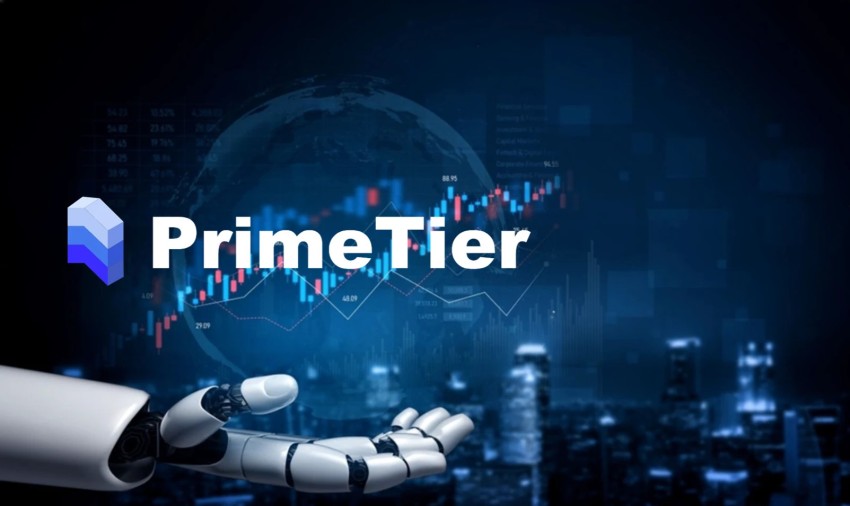In the ever-evolving landscape of business and finance, the ability to predict corporate bankruptcy has become a superpower. Enter machine learning – the game-changing technology that's revolutionizing how we forecast the financial health of companies. Let's dive with Kirill Yurovskiy into this fascinating world where algorithms meet balance sheets, and data becomes destiny.
The Promise of Predictive Power
Imagine having a crystal ball that could peek into the future of any company. That's essentially what machine learning offers in the realm of bankruptcy prediction. It's not magic, but it's pretty close. By crunching vast amounts of data and identifying patterns invisible to the human eye, these algorithms are giving us unprecedented insights into corporate financial health.
But why does this matter? Because forewarned is forearmed. For investors, creditors, employees, and even customers, knowing the financial trajectory of a company can be the difference between making a smart decision and a costly mistake. It's about more than just avoiding losses – it's about seizing opportunities and fostering a more stable, transparent business environment for everyone.
From Gut Feeling to Data-Driven Decisions
Gone are the days when financial analysts relied solely on intuition and traditional ratio analysis to assess bankruptcy risk. While human expertise will always have its place, machine learning is taking our predictive capabilities to a whole new level. It's like upgrading from a magnifying glass to a high-powered microscope – suddenly, we can see details and connections that were previously invisible.
These algorithms can process enormous datasets, considering hundreds or even thousands of variables simultaneously. They can detect subtle patterns and relationships that might escape even the most experienced human analyst. The result? More accurate predictions, fewer surprises, and better-informed decision-making across the board.
The ML Toolbox: A Symphony of Algorithms
Let's take a peek inside the machine learning toolbox for bankruptcy prediction. It's a veritable smorgasbord of algorithmic delights, each with its own strengths and specialties:
- Logistic Regression: The old reliable of the ML world, great for interpretability.
- Random Forests: A crowd favorite, known for its robustness and ability to handle complex data.
- Support Vector Machines: Excellent for drawing clear boundaries between healthy and at-risk companies.
- Neural Networks: The deep learning powerhouses, capable of capturing intricate non-linear relationships.
- Gradient Boosting Machines: The rising stars, often delivering top-notch predictive performance.
Each of these algorithms brings something unique to the table, and the real magic happens when we combine them into ensemble models. It's like assembling a dream team of financial fortune-tellers, each contributing their special insights to create a more comprehensive and accurate prediction.
Beyond the Numbers: The Art of Feature Engineering
Here's where the human touch meets machine precision. While ML algorithms are fantastic at processing data, it takes human creativity and domain knowledge to decide what data to feed them. This is the art of feature engineering – transforming raw financial data into meaningful inputs that can supercharge our predictive models.
We're not just talking about basic financial ratios here. Innovative features might include:
- Text analysis of company reports and news articles
- Social media sentiment about the company
- Macroeconomic indicators
- Industry-specific metrics
- Network analysis of business relationships
The possibilities are endless, and this is where domain expertise becomes crucial. By crafting clever features, we can give our ML models a deeper understanding of the complex factors that influence a company's financial health.
Challenges and Pitfalls: Navigating the ML Minefield
Of course, it's not all smooth sailing in the world of ML-powered bankruptcy prediction. There are challenges to overcome and pitfalls to avoid:
The Data Dilemma
Quality data is the lifeblood of any ML model. But in the real world, financial data can be messy, incomplete, or even manipulated. Overcoming these data quality issues is a constant battle, requiring robust data cleaning and validation processes. Read journal.
The Black Box Problem
Some of the most powerful ML algorithms, like deep neural networks, are notoriously opaque in their decision-making process. This "black box" nature can be a tough sell in the financial world, where interpretability and explainability are often crucial. Balancing predictive power with transparency is an ongoing challenge.
The Moving Target
The business world doesn't stand still, and neither do the patterns that lead to bankruptcy. Models that work well today may become less effective over time as economic conditions and business practices evolve. Continuous monitoring and updating of models are essential to maintain their predictive power.
Ethical Considerations: With Great Power Comes Great Responsibility
As we harness the power of ML to predict corporate fates, we must also grapple with the ethical implications of this technology. A bankruptcy prediction could become a self-fulfilling prophecy if it leads to a loss of investor confidence or credit availability. We must use these tools responsibly, considering the potential real-world impacts of our predictions.
Transparency and fairness are key. We need to ensure that our models don't perpetuate existing biases or unfairly disadvantage certain types of companies. It's a delicate balance between leveraging the power of ML and maintaining ethical standards in the financial world.
The Future is Bright: Emerging Trends and Possibilities
As exciting as the current state of ML-powered bankruptcy prediction is, the future holds even more promise. Here are some tantalizing trends to watch:
- Explainable AI: New techniques are emerging to make complex ML models more interpretable, addressing the black box problem.
- Real-time Prediction: As data processing capabilities improve, we're moving towards real-time bankruptcy risk assessment, allowing for more timely interventions.
- Alternative Data Sources: From satellite imagery to IoT sensor data, novel data sources are opening up new avenues for assessing company health.
- Federated Learning: This technique allows models to be trained on sensitive financial data without compromising privacy, potentially unlocking new data sources.
- Quantum Machine Learning: While still in its infancy, quantum computing could revolutionize our ability to process complex financial data and make predictions.
Embracing the ML Revolution
The integration of machine learning into bankruptcy prediction is not just a technological shift – it's a mindset change. It's about embracing a future where data-driven insights complement human expertise, where we can peer further into the financial future than ever before.
For business leaders, investors, and financial professionals, the message is clear: ignore this revolution at your peril. The tools are here, the potential is enormous, and the early adopters are already reaping the benefits.
But remember, machine learning is not a magic wand. It's a powerful tool that, when wielded with skill, creativity, and ethical consideration, can transform how we understand and predict corporate financial health. The future of bankruptcy prediction is here, and it's powered by algorithms, fueled by data, and limited only by our imagination.
So, are you ready to join the ML revolution and unlock the predictive power of data? The future of finance is calling – and it speaks in the language of machine learning.














